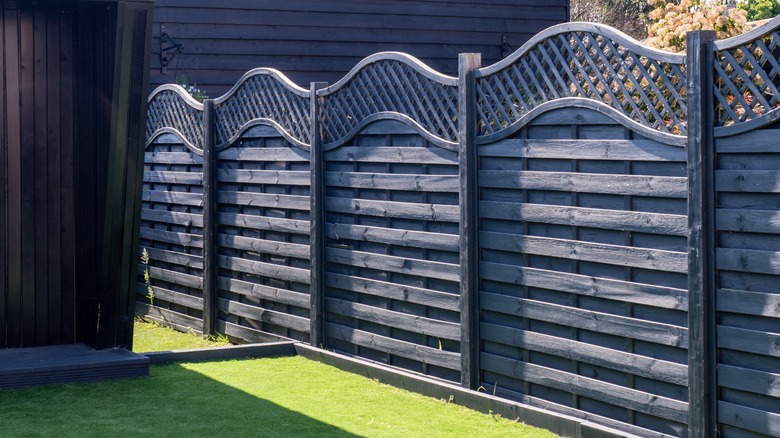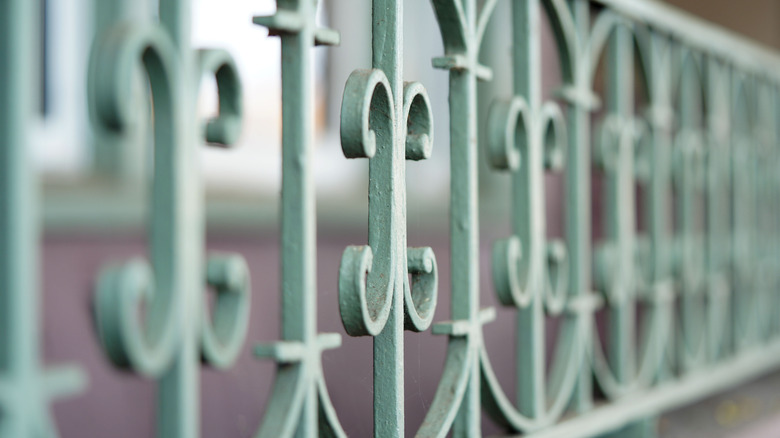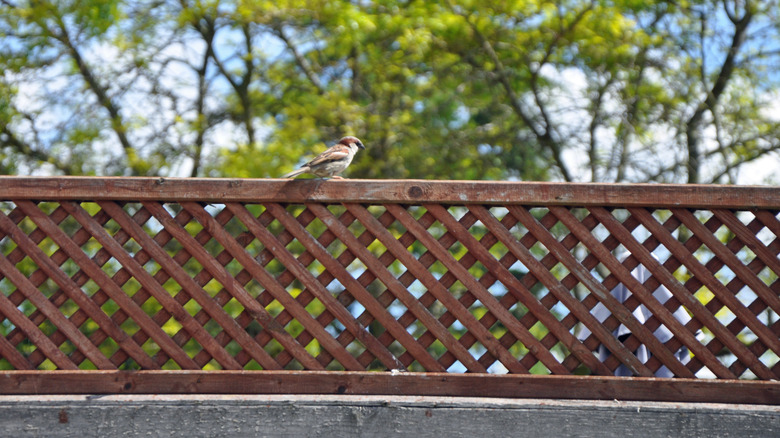How To Use A Fence Topper For Extra Backyard Privacy
Fence toppers, also known as fence extensions, are attachments that are placed on top of an existing fence to increase its height. They can be purely decorative, but are mainly installed to add extra privacy. Fence toppers can match the existing fence, or they can be made of a completely different material to create a unique design aesthetic. They typically extend the height of your fence by 1 to 2 feet.
Installing a fence topper brings numerous benefits to your outdoor space. Not only does it provide additional privacy and security for both pets and kids, but a fence topper can also offer shade by blocking out the sun during certain times of the day. These extensions can minimize noise pollution, and they can conceal unsightly views too. With a range of materials available, like wood, vinyl, wrought iron, and stone, fence toppers can elevate your outdoor area into a private and functional sanctuary. They also provide a cost-effective way to update the appearance of an existing fence without requiring a complete replacement.
Types of fence toppers
You can choose from more than a few different types of fence toppers, which also range in price. The general rule of thumb is the more durable the material, the more costly it will end up being. You'll also want to compare the price of a professional installation or a DIY one. Wood lattice is an affordable option that can add 2 feet of height to an existing fence, while vinyl lattice is decorative, durable, and comes in multiple colors and styles. It's important to remember that framed lattice is sturdier and will last longer. Depending on your weather, you may want to seal your lattice to protect it from the elements. If you have a garden, lattices are great for creating a natural-looking barrier between you and your neighbors because they encourage the growth and training of creeping plants.
For homes that have fortress-like concrete or stone fencing, wrought iron fence toppers add a sophisticated element, though it won't do much in the way of privacy. It's more for keeping things on the other side of the fence and preventing them from coming into your property. Chain link or poly-mesh toppers are great at keeping high-jumping dogs and cats from making an escape. These toppers can also act as a trellis for plant growth, which gives an extra bit of privacy too.
Things to consider before you start building
When considering adding a fence topper, there are a couple of important factors to keep in mind. Before beginning this project, it is crucial to check the building restrictions and regulations in your community, as they may impose limitations on fence height and materials. Homeowners' associations often enforce these restrictions to maintain a uniform appearance among properties. Equally important is having a conversation with your neighbors about the project prior to construction, as this open communication can help prevent any potential conflicts that could possibly arise.
Additionally, you'll also want to take into account how much the entire installation process is going to cost. If you choose to hire a fencing contractor or handyman, this is going to cost more than doing it yourself. The final amount will vary based on the complexity of the job, the materials used, and the location of your residence. On the other hand, if you decide to go the DIY route, you'll need to acquire the appropriate hardware, tools, and materials, all while keeping stock that everything is the correct size. Adding fence toppers to a lot of fencing can take several weekends to complete, so you may want to invite a friend or two to be your building buddy.


